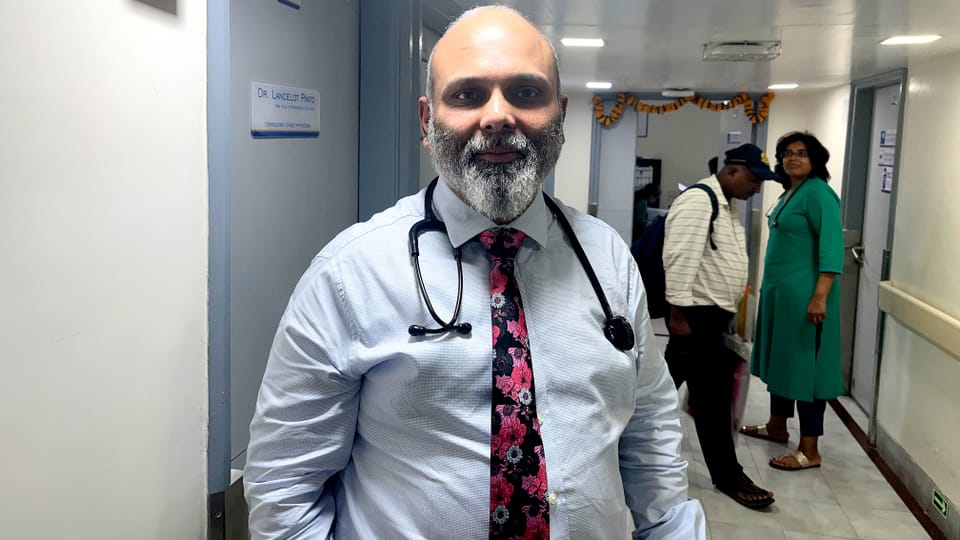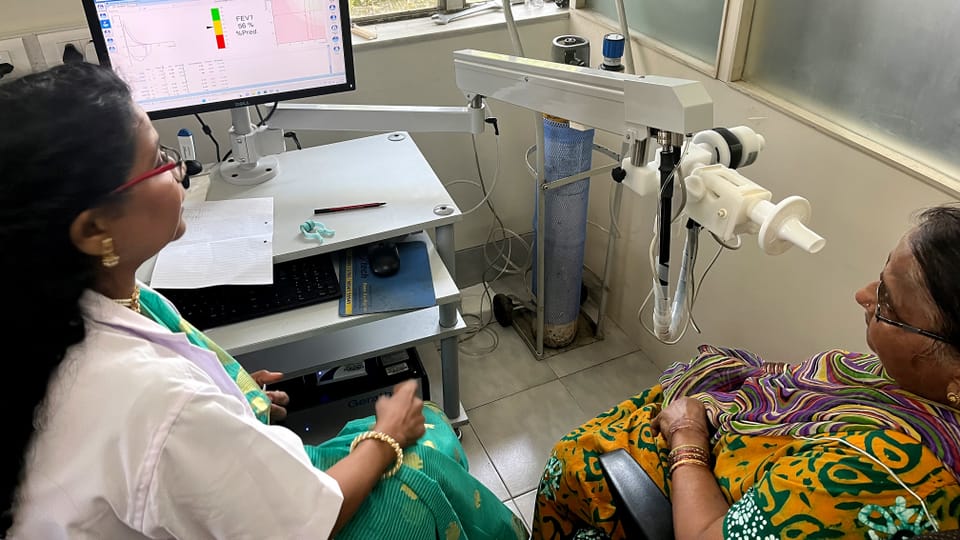Contents
The Indian economic metropolis is being plagued by toxic air earlier than usual – the pollution was at times even higher than in the smog capital Delhi. Doctors and scientists are ringing the alarm bells, but the city is slow to respond.
A hospital in the center of Mumbai. A nurse demonstrates how the lung function test works: take a deep breath and a long exhale. Ranjana Bandwagawni, a corpulent older woman, listens attentively. It’s her turn soon. After two weeks of extremely bad air in Mumbai, she has breathing problems.
Legend:
66-year-old Ranjana Bandwagawni feels like she’s suffocating since the air has gotten so bad.
SRF / Maren Peters
“I’m short of breath and often feel like I’m suffocating,” says the 66-year-old. She can’t escape the bad air: it’s cramped and crowded where she lives. There is no air purifier, as in many middle-class apartments, not even a fan.
We have many patients who are now coming to the emergency room.
Pulmonologist Dr. This all sounds familiar to Lancelot Pinto. His waiting room at the Hinduja Hospital is much fuller than usual these days.
“We have many patients who have been stable in the last few months and are now coming to the emergency room: short of breath, wheezing, coughing,” says Pinto. He gives them steroids to suppress the immune system – a reaction of the body to the bad air.

Legend:
Dr. Lancelot Pinto, a pulmonologist at the Hinduja Hospital in Mumbai, has had significantly more patients in his practice since the smog attack.
SRF/Maren Peters
Children are particularly at risk because their lungs are still growing, says Pinto. “No one believes that breathing toxic air all day has no impact on children’s long-term health.”
Various factors make the situation worse
In recent days, scientists have measured air quality in some areas of Mumbai that the WHO describes as “very bad”.
Smog in Mumbai after the end of the rainy season is normal, says Professor Gufran Beig from Bangalore, the best-known air measurement expert in India. The wind from the sea died down and toxic air particles could not be blown away as usual, but instead remained hanging over the city. But this year there are new factors: due to intensive construction work, for example, there are many more toxic dust particles in the air than in previous years.
According to the city administration, there are currently 6,000 construction projects in the economic metropolis – twice as many as in the previous year. Among other things, a subway, a kilometer-long, multi-lane bypass and a rapid transit railway are currently being built, as well as many new high-rise buildings. Other important sources of smog are street dust as a result of heavy traffic, open waste burning and industrial exhaust fumes.
Beig expects the smog situation to worsen further in the next few weeks due to winter weather conditions if the city administration does not take decisive action to counteract it.
“There are enough regulations to curb air pollution,” says Beig. For example, dust collectors are required for house construction and sprinklers are required to bind toxic dust at construction sites. “But these regulations are not being followed.”
Powerful construction lobby acts as a brake
Only in the last few days, after intensive media coverage, and many public appeals from experts such as pulmonologist Pinto and air expert Beig, the city authorities have announced countermeasures. Whether it can enforce this against the resistance of the powerful construction lobby is an open question in Mumbai. Because more protective measures cost more money.
